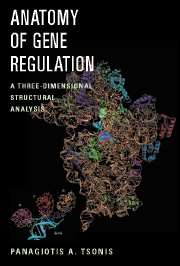Book contents
- Frontmatter
- Contents
- Preface
- 1 A General Introduction to 3-D Structures
- 2 The Higher Organization of the Genome
- 3 Structure of DNA and Telomeres
- 4 DNA Replication
- 5 Transcription in Prokaryotes
- 6 Transcription in Eukaryotes
- 7 Splicing
- 8 Modifications of mRNA
- 9 Compartmentalization of Transcription
- 10 Protein Synthesis
- 11 The Birth and Death of Proteins
- Further Reading and References
- Index
2 - The Higher Organization of the Genome
Published online by Cambridge University Press: 24 May 2010
- Frontmatter
- Contents
- Preface
- 1 A General Introduction to 3-D Structures
- 2 The Higher Organization of the Genome
- 3 Structure of DNA and Telomeres
- 4 DNA Replication
- 5 Transcription in Prokaryotes
- 6 Transcription in Eukaryotes
- 7 Splicing
- 8 Modifications of mRNA
- 9 Compartmentalization of Transcription
- 10 Protein Synthesis
- 11 The Birth and Death of Proteins
- Further Reading and References
- Index
Summary
PRIMER DNA is not free in the nucleus; it is bound by the proteins that package it. This fact is important because DNA must be accommodated in a small place. Also, as we will see in Chapter 6, the packaging provides a level of transcriptional control. In this chapter, the goal is to become familiar with the proteins that are involved in packaging and their effects on DNA. The first part of the chapter examines the 3-D structure of the nucleosome and its components, the histones. This structure is the highest order of DNA packaging. Other proteins (nonhistone), however, have the ability to bend DNA and, therefore, provide another degree of organization. Such architectural proteins are important because linear DNA is not very efficient when it comes to regulation. Regulatory elements are often separated by long distances, and they must come close for interaction. Also, bending DNA makes it more accessible for interactions with proteins. These nonhistone proteins possess different structural motifs that mediate interaction with DNA. Their structural characteristics and effects on DNA are presented. The importance of these architectural proteins is also stressed in later chapters.
PACKING DNA IN THE CHROMOSOMES
The genetic material, DNA, is packaged into chromosomes as chromatin, which is the DNA and chromosomal proteins. The way that this packaging is achieved is suitable for DNA accommodation in the nucleus. It also most likely plays a role in DNA regulation. The packing of DNA is characterized by coils, loops, and coils within the loops.
- Type
- Chapter
- Information
- Anatomy of Gene RegulationA Three-dimensional Structural Analysis, pp. 6 - 13Publisher: Cambridge University PressPrint publication year: 2003



